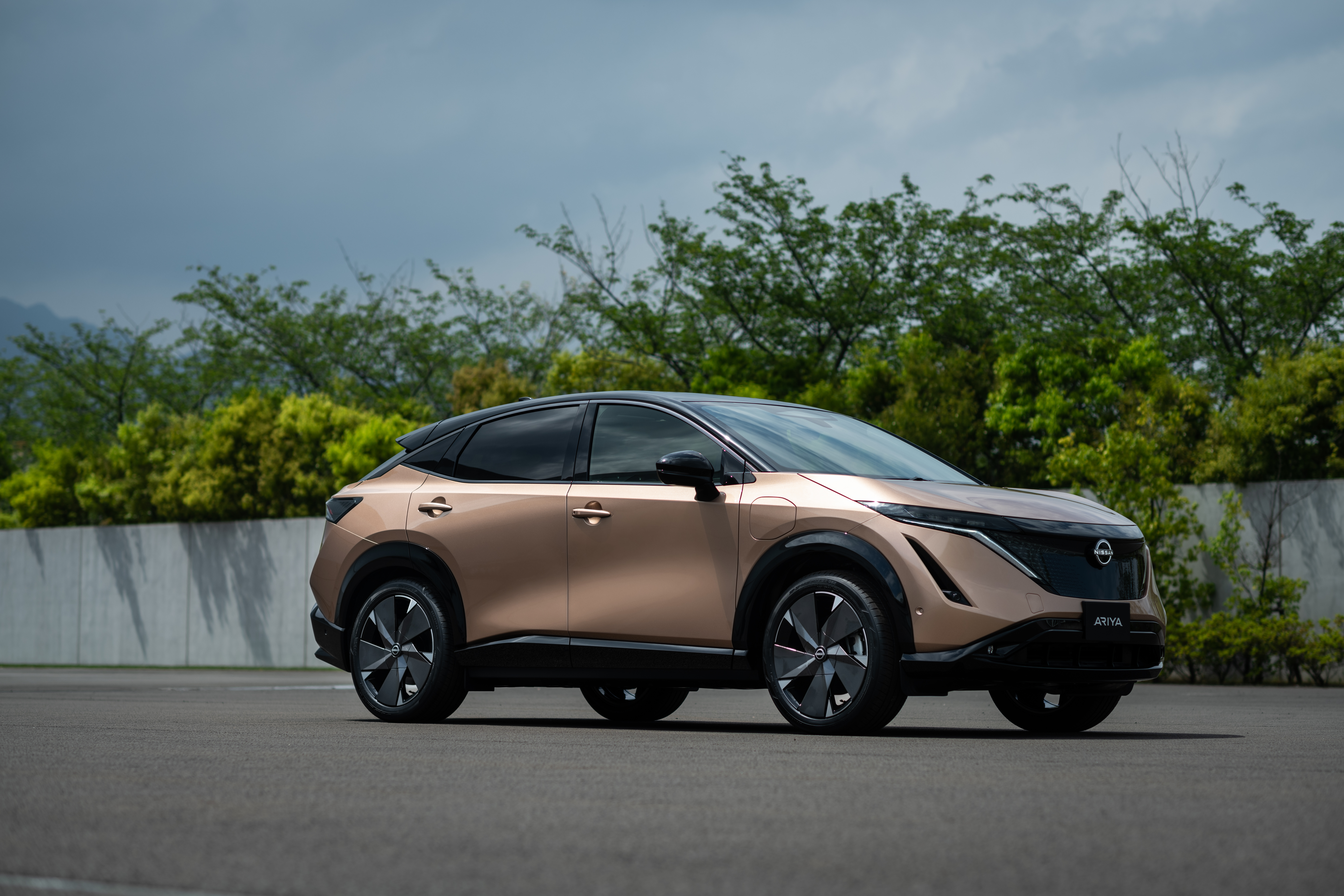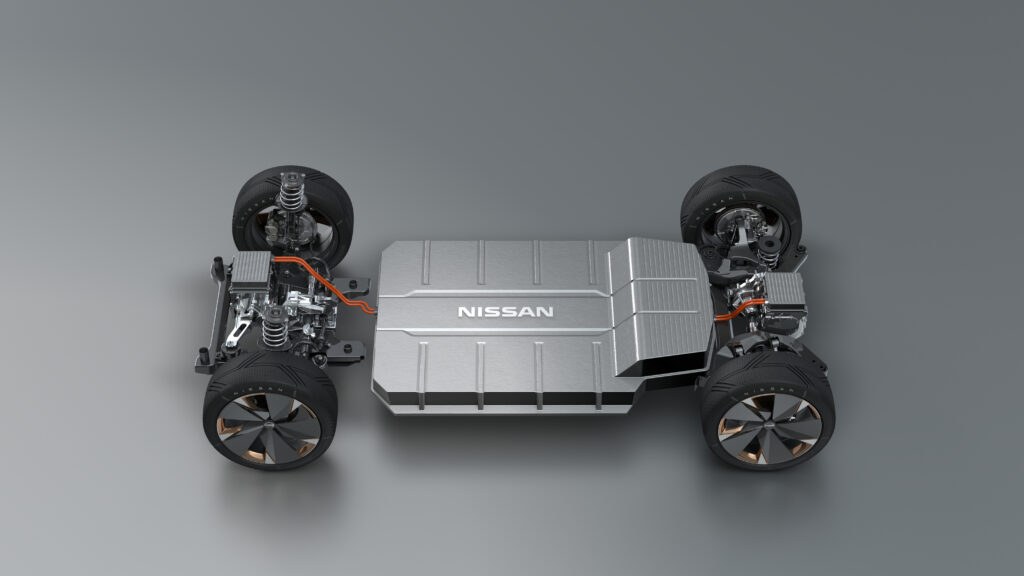Nissan Ariya adopts liquid-cooled battery
- PostedPublished 10 September 2020

Nissan breaks from air cooling to boost thermal control, charging capability of electric Ariya SUV
Nissan’s new Ariya is an electric SUV that showcases the brand’s “Intelligent Mobility” strategy, which ultimately aims to bring both vehicle emissions and road fatalities to zero.
The Ariya is the brand’s first all-electric SUV and, encouragingly, it isn’t based on an existing and limiting conventional platform. Instead, it is underpinned with an all-new Renault-Nissan-Mitsubishi Alliance electric platform that has been optimised to deliver the best packaging, interior space and performance.
Even the entry-level model, which is front-wheel drive, will feature a 65kWh battery and a range of up to 450km. That almost matches the 460km offered by the entry-level Tesla Model 3, so even in base form few should have concerns about range. It’s no slouch, either, with its 160kW motor propelling it from 0-100km/h in 7.5 seconds.
Higher-performance versions will be offered, the range topping out with a dual-motor model featuring a 90kWh battery, a 580km range, all-wheel drive and a claimed 0-100km/h time of just 5.1s.
The Ariya also features myriad safety and convenience highlights, such as the e-Pedal system that was first introduced in the Leaf and enables the driver to drive the car using just one pedal.
More interestingly, however, is the fact that the Ariya utilises a liquid-cooled battery pack. This is a significant change of tack for Nissan, given that its electric Leaf hatchback has relied on passively air-cooled batteries since it was first unveiled back in 2009.
While less complicated, less expensive and lighter, the use of air-cooled batteries – let alone passive air cooling – entails penalties such as less effective cooling, which can impose limitations on charging speeds.
This lack of cooling capacity can also exacerbate wear and tear on the battery, particularly if it is worked hard and DC fast chargers are used regularly.

A current Nissan Leaf, for example, supports a maximum direct current (DC) charging rate of 50kW.
The aforementioned base-model Tesla 3, with a liquid-cooled battery, supports up to 170kW when coupled to an appropriate charging station.
Increases in charging speed mean less time required for charging, which improves the ease of use of EVs and makes them more feasible for many a buyer – which is no doubt why Nissan has now made the leap to liquid-cooled batteries.
This has allowed, in conjunction with a battery thermal control system, for Nissan to bump the Ariya’s peak charging power up to 130kW.
As a result, its batteries can be charged to grant a 375km range in just 30 minutes. Consequently, the Ariya will prove appealing to those who regularly undertake longer trips and to those who don’t have routine access to a charging point.
Nissan says that, in Japan, the Ariya will have a starting price of ¥5 million ($A64,715). Unfortunately, there’s no news yet as to whether the Ariya will come to Australia or New Zealand.
Nissan has so far confirmed that it will be offered in Japan from mid-2021 onwards, while Europe, North America and China will start receiving Ariyas at the end of 2021.
Given its range, capabilities and potentially competitive price, it would an appreciated addition to the burgeoning Australasian EV marketplace.
Nissan study into EV air-con wins award
A paper on optimising EV air-conditioning systems secured Nissan an award at the 70th Automotive Engineering Awards, which was hosted by the Society of Automotive Engineers of Japan (JSAE)
One of the major issues with electric vehicles is efficient and effective heating and cooling of the cabins – as, unlike conventional petrol or diesel cars, there is no extensive source of waste heat and no pre-existing means for driving an air-conditioning compressor.
Consequently, electrically driven compressors and bespoke heating solutions have to be employed. However, to maintain the vehicle’s range, every facet of the systems have to be efficient as possible.
Nissan’s engineers, working in conjunction with specialists from technology and manufacturing specialist AGC, have developed new methods to assess how temperature, thermal radiation and air flow affect passenger thermal comfort.
The paper, titled “Equivalent temperature analysis in vehicle compartment by mesh-free simulation,” documents analysis methods that model the impact of myriad climate-related variables on a vehicle’s occupants – including a simulation that accurately demonstrates how clothing might retain or shed heat.
Using the new methods and models allows for more effective air-conditioning system design, resulting in more efficient operation. This reduces energy consumption, granting increases in vehicle range without increases in battery capacity.
- CategoriesIn SightGlass
- Tagsbattery, electric vehicles, EV, SightGlass News Issue 21, thermal management

